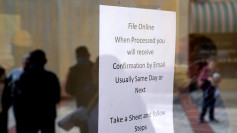On Tuesday, traders upped their predictions for U.S. data, which caused the dollar to linger above a one-month high. As a stubbornly strong labor market continues to be mostly impervious to forceful rate hikes, Federal Reserve interest rate levels are needed to control inflation.
The data, which caught traders off guard and sent the pound down to a one-month low of $1.2006 in the previous session, misled investors who were betting on an impending stop in the Fed's rate-hiking cycle. At last, it had increased by 0.09% to $1.2033.
Markets were still suffering from the shock of Friday's jobs report, which revealed that non-farm payrolls jumped by an astonishing 517,000 in January, significantly beyond expectations.
Similar to the Australian dollar, the New Zealand dollar increased 0.6% to $0.6308, but it was still close to its one-month low of $0.6271 set on Monday. The euro increased 0.6% to $1.0733 after falling to $1.0709 in the previous session, its lowest level since January 9.
"Since last Friday, (when) the U.S. reported a stronger than expected jobs number, this has reversed expectations that the Fed would pivot in its monetary policy," Tina Teng, market analyst at CMC Markets said.
On the strength of higher rate forecasts, U.S. Treasury rates have increased, with two-year yields reaching a one-month high of 4.493 percent on Monday. At last check, two-year yields were 4.4347 percent. The benchmark 10-year yields last stood at 3.6305 percent, having risen to a four-week high of 3.6550 percent the previous session.
On Monday, the soaring dollar helped the U.S. dollar index reach a level close to one month high of 103.76; it last traded slightly lower at 103.52. In contrast to estimates of less than 5% prior to Friday's jobs report, futures pricing indicates that markets expect the Fed funds rate to peak at slightly around 5.1 percent by July.
The Australian dollar increased by 0.23 percent to $0.6899 ahead of the Reserve Bank of Australia's (RBA) decision to raise interest rates later on Tuesday. The RBA is anticipated to increase the cash rate by 25 basis points, and attention will be focused on the statement that goes along with it for hints on the likely direction of monetary policy this year.
The Japanese yen gained 0.2% to 132.37 per dollar in other parts of Asia, but it was stuck close to Monday's one-month low of 132.90.






